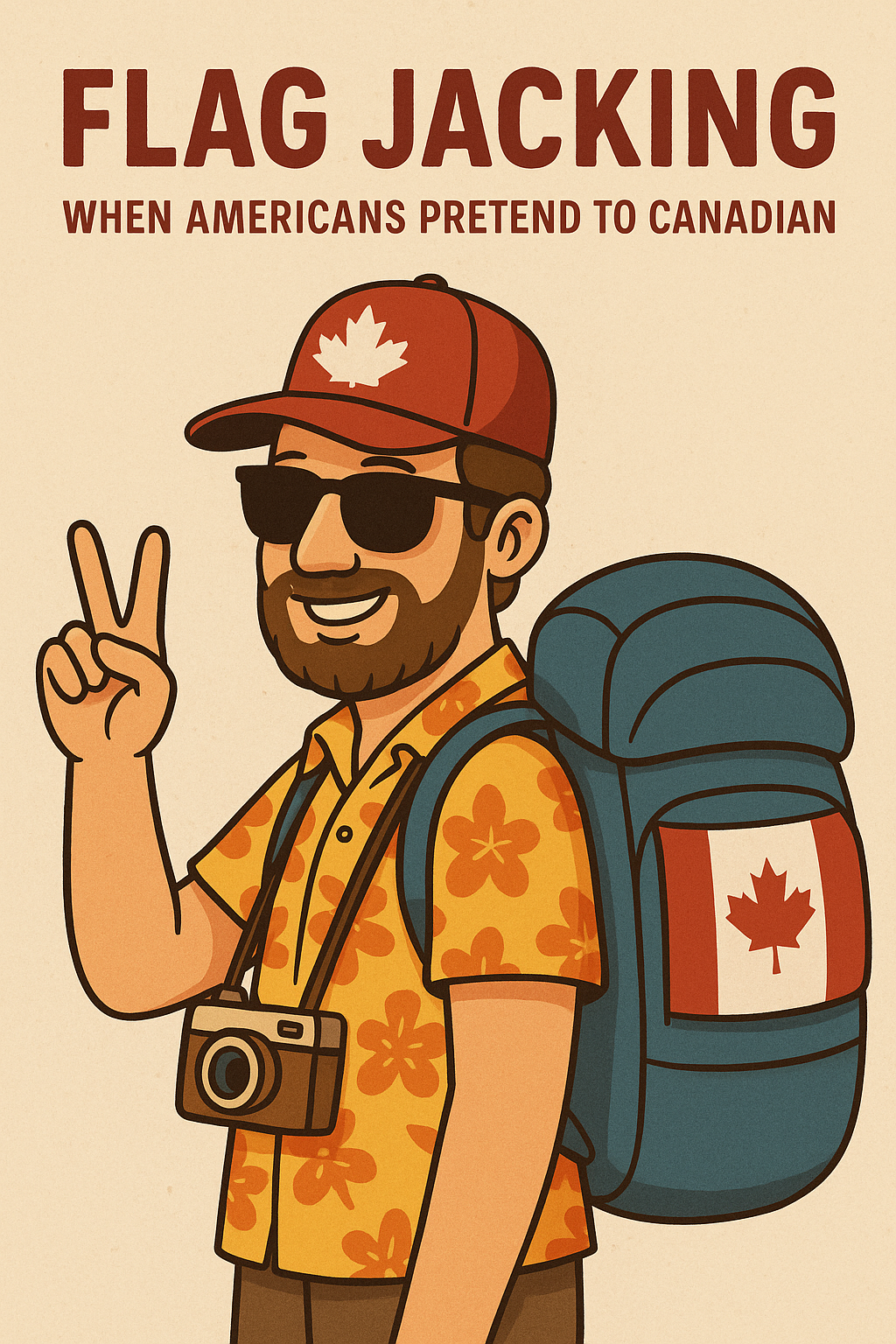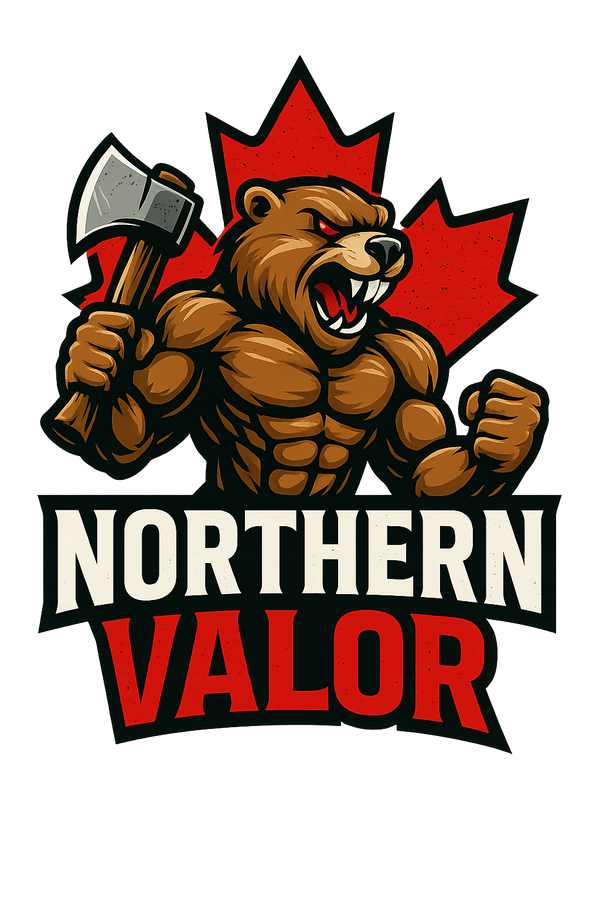
“Flag Jacking: When Americans Borrow the Maple Leaf to Dodge the World’s Side-Eye”
Share
Somewhere between a Tim Hortons double-double and a Mountie calendar, an American tourist is sewing a red maple leaf onto their backpack. No, they’re not expressing newfound patriotism for the Great White North—they’re flag jacking.
Flag jacking, for the uninitiated, is the noble (or cowardly, depending on your perspective) art of pretending to be Canadian while traveling abroad. The logic is simple: Canadians are globally beloved for our politeness, poutine, and refusal to start wars. Americans, on the other hand, have a reputation that can make customs agents twitch. So, in the name of international goodwill—and cheaper bar conversations—some Americans slap on the maple leaf and start apologizing for everything in sight.
It’s the global version of putting on a fake mustache and insisting you’re “from out of town.”
The Maple Leaf Mirage
Picture it: a beachside hostel in Greece. Someone from Texas is nervously zipping their fanny pack while practicing phrases like, “Sorry, eh?” and “What a beauty, bud.” A maple leaf patch flutters proudly on their Jansport. They’re ready to face the world as Chad from Calgary—even though they can’t name a single province that isn’t Toronto.
When asked about hockey, they panic. When asked about healthcare, they say, “Yeah, it’s free, right?” When asked who the Prime Minister is, they just mumble something about Trudeau and quickly change the subject to Drake.
The Canadian Cover Story
Flag jacking has been going on for decades. It surged after unpopular wars, controversial elections, and anytime a celebrity said something that made the rest of the world collectively groan. In those moments, the maple leaf becomes a kind of international witness protection badge.
It’s effective too—people smile at you, forgive your bad geography, and even offer you free drinks. Canadians are like the emotional support humans of global tourism. And for Americans who crave that energy, a patch from Amazon Prime is cheaper than therapy.
Real Canadians Aren’t Impressed
Meanwhile, actual Canadians are standing there like, “Buddy, you can’t just say ‘eh’ at the end of every sentence and expect to blend in.” They can spot a fake in seconds. The telltale signs?
You pronounce it “Tor-on-toe” instead of “Tronno.”
You think a toque is a French dessert.
You refer to ketchup chips as “weird.”
Flag jacking, to a Canadian, is kind of like someone showing up to a family barbecue in your cousin’s hockey jersey and insisting they’re part of the clan. It’s flattering—sure—but also mildly horrifying.
The Irony Maple Syrup Drip
There’s a delicious irony here. Canada spent decades trying to carve out its own identity apart from America—then America decided to borrow it for better Yelp reviews overseas. It’s as if the younger sibling finally got cool, and the older one started copying their homework.
Still, maybe this strange cultural cosplay has a silver lining. If a few Americans pretending to be Canadian end up learning what “aboot” really means, or discover that saying “sorry” feels kind of good, maybe the world wins. Maybe diplomacy just needed a flag patch and a Timbit.
The Final Verdict
Flag jacking: a victimless crime or an act of cultural theft? Probably somewhere between the two. It’s silly, it’s sneaky, and it’s a little bit sweet—like maple syrup poured over a plate of freedom fries.
But be warned, fake Canadians: if you ever get called out by an actual Canuck abroad, there’s only one way to make it right—buy them a round, admit your sins, and say the sacred words:
“Sorry, eh?”
